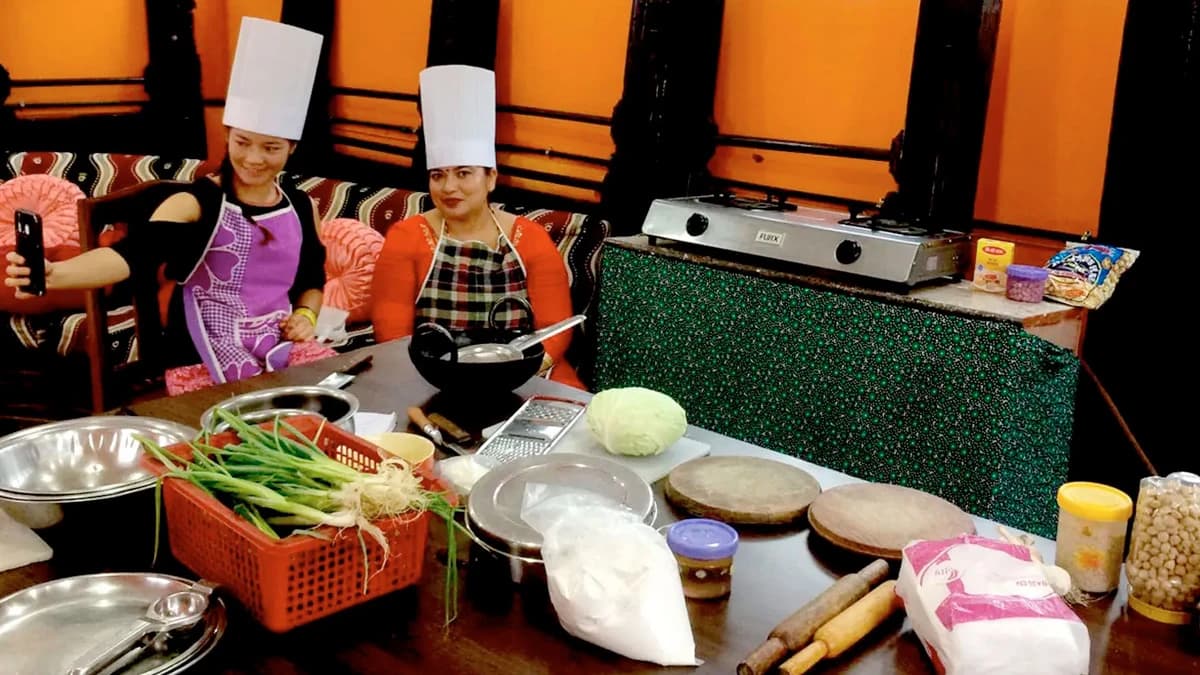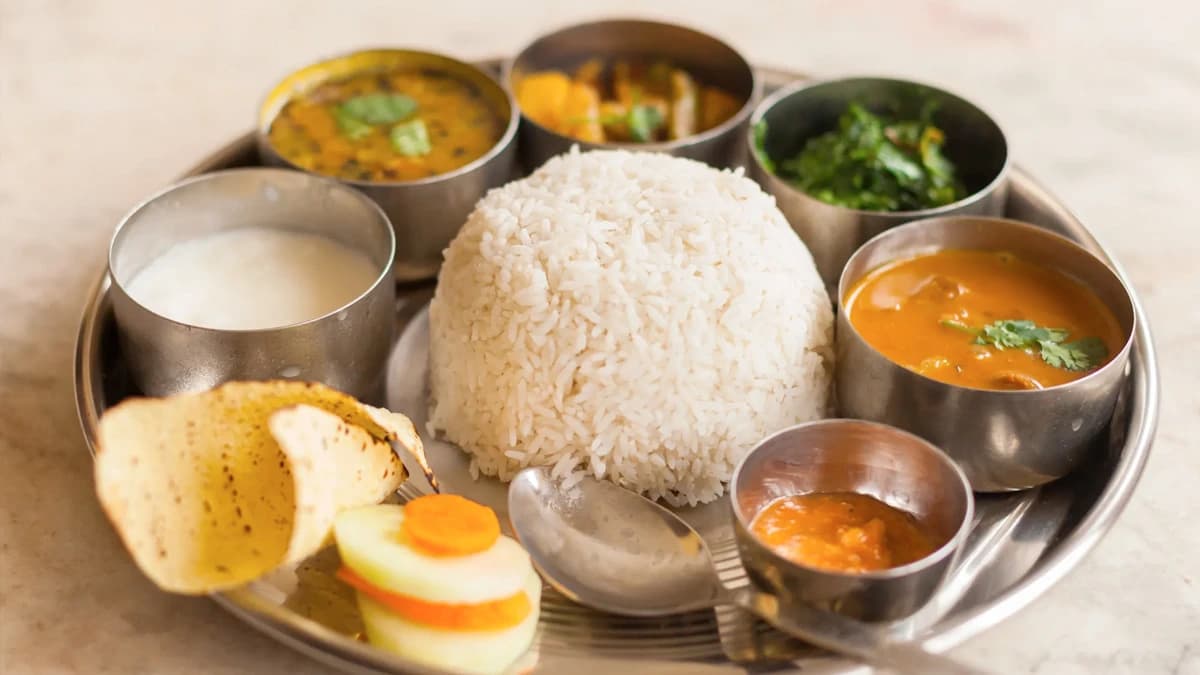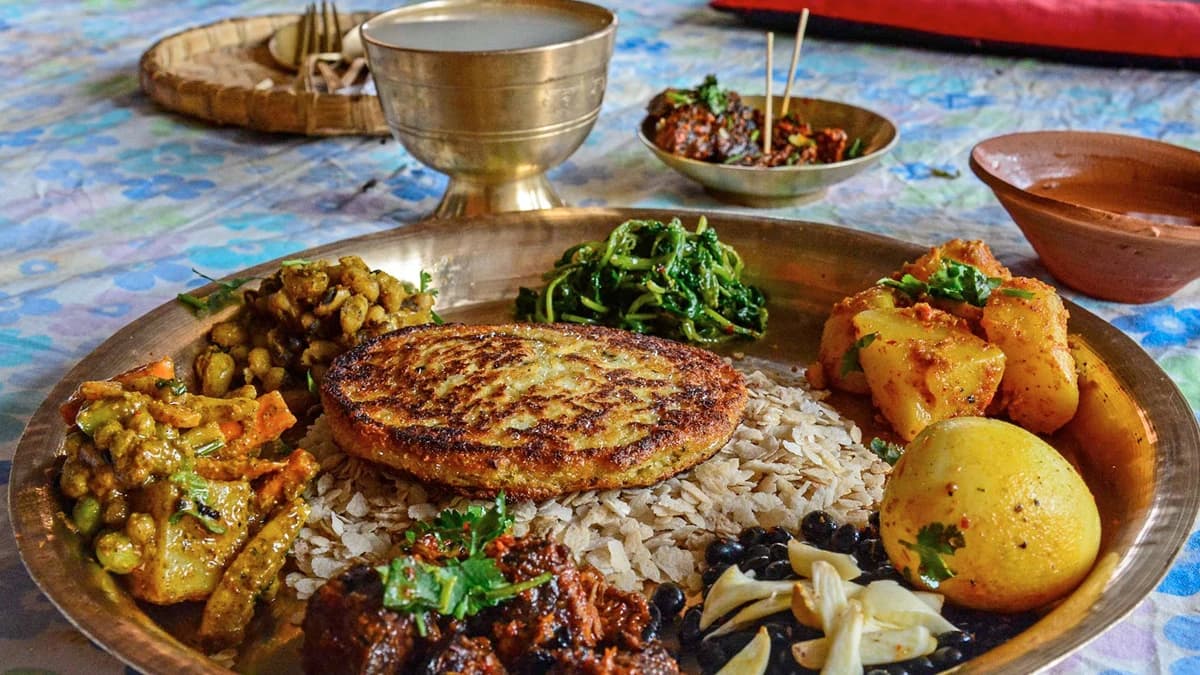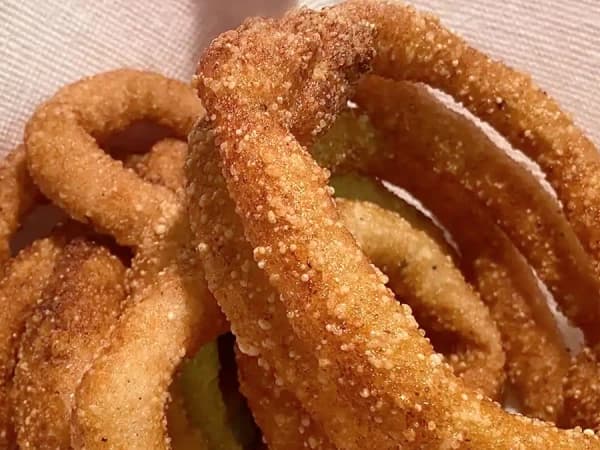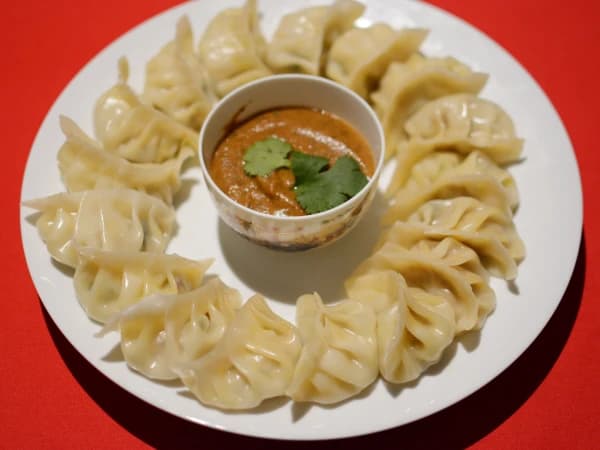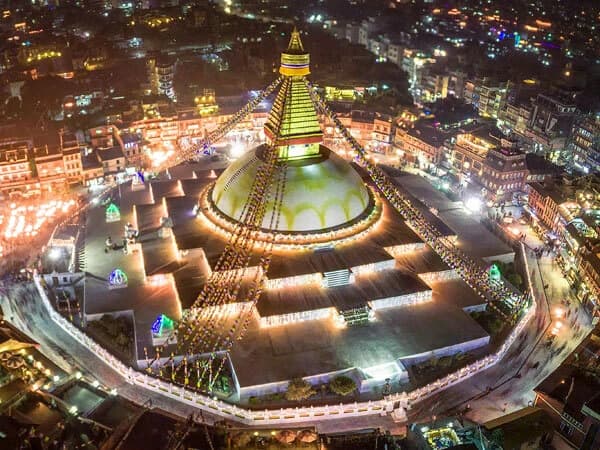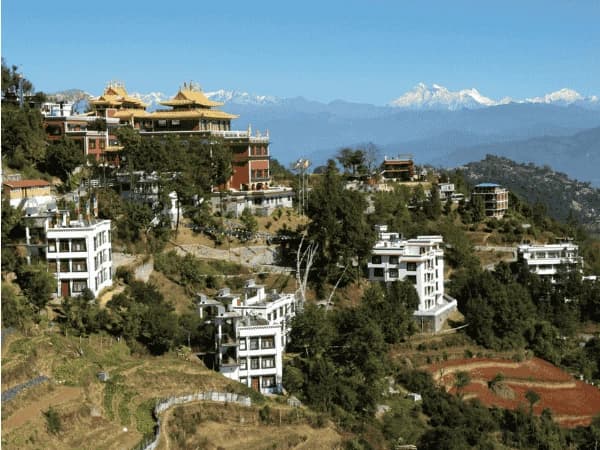Nepal Food Cooking Class - 1 Day
Discover the flavors of Nepal with a one-day Nepali Food Cooking Class in Kathmandu — the perfect hands-on culinary experience for food lovers, travelers, and anyone searching for the best cooking class in Kathmandu. This immersive Nepalese cooking class blends traditional recipes, market shopping, and warm Himalayan hospitality to deliver an authentic taste of Nepali cuisine in the heart of Kathmandu (Thamel / Old City).
Your day begins with a guided market visit — a highlight of any Kathmandu cooking class. Wander colorful stalls overflowing with fresh seasonal vegetables, aromatic spices, local herbs, and Tibetan influences. Learn to pick the freshest ingredients for momo, dal bhat, tarkari, and achar, while your chef-instructor explains key Nepali pantry staples: timur (Szechuan pepper), jimbu, mustard oil, and fenugreek. This market tour not only teaches ingredient selection but also connects you to the cultural roots of Nepali food.
Back in the cozy cooking studio, your experienced Nepali chef leads a hands-on Nepalese cooking lesson. The one-day class covers high-demand traditional recipes that travelers rave about: classic Dal Bhat (lentil soup with steamed rice), vegetable tarkari (seasonal curry), homemade achar (spicy pickle), and the ever-popular momo — learn both steamed and pan-fried techniques. Vegetarians and meat-eaters alike will find flexible options, and the class often includes a sweet finish like sel roti or a seasonal dessert. This is more than a cooking demo — it’s an interactive Kathmandu cooking workshop where you chop, mix, roll, and steam alongside a local expert.
Main Highlights of Nepali Food Cooking Class in Kathmandu
- One-Day Culinary Experience – A top-rated Kathmandu cooking class combining hands-on lessons, cultural stories, and authentic Nepali flavors in the heart of Thamel or Old City.
- Guided Local Market Tour – Shop like a local in vibrant Kathmandu bazaars, learning to select fresh vegetables, Himalayan spices, and traditional Nepali ingredients like timur, jimbu, and mustard oil.
- Hands-On Nepali Recipes – Master signature dishes such as Dal Bhat Tarkari, flavorful curries, homemade achar (pickle), and the ever-popular momo dumplings—both steamed and pan-fried.
- Festival & Regional Dishes – Learn specialties like sel roti, Newari wo, Thakali platters, and gundruk soups for a deeper taste of Nepalese tradition.
- Interactive Cooking Techniques – Practice spice tempering, momo folding, fermentation skills, and traditional grinding methods using a sil-batta (mortar and pestle).
- Vegetarian & Meat Options – Flexible recipes to suit every palate, from plant-based feasts to hearty Himalayan curries.
- Cultural Insights – Discover family-style Nepali recipes, meal structures, and regional variations from Newari to Himalayan cuisine.
- Perfect for All Travelers – Ideal for solo adventurers, couples, families, and food lovers seeking authentic Nepal culinary experiences to recreate at home.
- Take-Home Souvenirs – Printed recipes, cooking confidence, and unforgettable flavors to share long after your Nepal journey.
Why take this Nepali cooking class in Kathmandu?
Aside from being one of the top things to do in Kathmandu for foodies, it’s a cultural cooking experience: you’ll learn family-style recipes passed through generations, insight into meal structure (the sacred role of dal bhat), and tips for recreating authentic Nepali flavors at home. The chef shares regional variations — Newari, Tamang, and Himalayan influences — so you gain a broad taste of Nepalese cuisine beyond the tourist menu.
Perfect for solo travelers, couples, and families, this Kathmandu cooking class makes an unforgettable cultural souvenir — skills and recipes you can cook again at home. If you’re planning culinary things to do in Kathmandu, add a one-day Nepali food cooking class to your itinerary: it’s an authentic, hands-on, and delicious way to bring Nepal home with you.
What kinds of Nepali meals you can learn during a cooking class in Kathmandu
If you sign up for a Nepali cooking class in Kathmandu, be ready for a joyful crash-course in flavors, textures and traditions. These classes are designed for food lovers who want to learn to cook Nepalese food—from the everyday comfort of dal bhat tarkari to festival treats like sel roti and street-food stars like Nepalese momo. Below I walk you through the most popular dishes you’ll encounter, why they matter, and the hands-on skills you’ll take home.
Dal Bhat Tarkari — Nepal’s heart on a plate
The first, and often most-loved, lesson is how to make dal bhat tarkari—the national comfort meal. You’ll learn to cook perfectly tempered lentil soup (dal), fragrant steamed rice (bhat), and the seasonal vegetable curry (tarkari). In class you’ll master tempering spices (jeera, mustard seeds, hing), balancing salt and acid with tomato or lemon, and timing everything so the dal and rice finish together. Teachers emphasize nutrition and variations: dal bhat with ghee for richness, or lighter versions for travelers.
Nepalese Momo — folding, filling, and steaming perfection
No Kathmandu cooking course is complete without momos recipe practice. You’ll make the dough, mix fillings (buff, chicken, pork, or vegetarian with cabbage and paneer), and learn folding techniques: pleated crescent, round dumpling, and steamed vs. fried momos. Instructors show how to make the spicy sesame or tomato-ginger dipping sauce (achar) that makes momos addictive. This lesson is hands-on and social — perfect for groups.
Newari cuisine — ancient flavors from the Kathmandu Valley
Many classes include a module on Newari food, the rich, ceremonial cuisine of the Kathmandu Valley. Expect to learn classics like wo (fermented soybean patties), chhoyela (smoked spiced meat), bara (lentil pancake), and yomari (sweet rice-flour dumplings filled with molasses). Newari cooking introduces you to fermentation, pounding spices in a mortar, and festival recipes—great if you search Newari food Kathmandu or traditional Newari recipes.
Achar and chutneys — the art of pickles & dipping sauces
A big secret of Nepalese meals is what sits beside the main dishes: achar (Nepalese pickle) and chutneys. In class you’ll learn to make tomato achar, sesame achar, spicy cilantro chutney and the tangy radish achar. These condiments teach acid balance, oil preservation, and spice layering—skills you’ll use again and again.
Sel Roti and festival breads — sweet, crunchy, celebratory
Want to learn a festival classic? Sel roti is a ring-shaped, deep-fried rice doughnut served at Tihar and other celebrations. The class will teach rice batter grinding, resting time, and frying techniques for a crisp exterior and airy interior. You may also try making roti, luchi, and festive sweets like kheer (rice pudding).
Gundruk and fermented greens — earthy, probiotic flavors
A uniquely Nepali lesson covers gundruk—fermented leafy greens—and how to use it in soups and curries. Gundruk deepens your understanding of traditional preservation and fermentation methods widely used in Himalayan cuisines. Teachers often pair this with sinki (fermented radish) for a truly local experience.
Thakali and Himalayan specialities — mountain comfort food
Some classes offer regional modules like Thakali cuisine, famous for its balanced platter of rice, lentils, meat curry, and pickles. You’ll learn the technique for slow-cooked meat curries, mountain-style vegetable dishes, and the composition of a Thakali set—useful for those searching Thakali food Kathmandu or Himalayan recipes.
Street food & snacks — quick, tasty, and travel-friendly
Learn to recreate Kathmandu’s beloved street snacks: chatamari (rice crepe), pani puri-style snacks, aloo chop (potato fritter), and quick tea-time treats. Street food lessons emphasize speed and portability—great for travelers who want to bring the taste of Nepal home.
Ayurveda-inspired and healthy Nepali dishes
Given the growing interest in wellness tourism, many cooking classes teach Ayurvedic principles—how to balance tastes (sweet, sour, salty, bitter, pungent, astringent) and create heartier or lighter plates using local ingredients. Expect tips on spices that aid digestion and meal combinations that suit different doshas.
Hands-on skills & kitchen culture
Beyond specific recipes, you’ll learn essential kitchen techniques: pounding spice pastes with a sil-batta (mortar and pestle), grinding rice and lentils for chatamari and sel roti, tempering mustard oil, and steaming in bamboo versus metal steamers. Instructors also teach grocery shopping at local markets, how to pick fresh herbs like dhaniya (cilantro) and tejpat (bay leaf), and cultural notes—when dishes are served, festival meanings, and regional variations.
Why take a cooking class in Kathmandu?
A Kathmandu cooking class is more than recipes; it’s a cultural exchange. You don’t just learn to cook Nepalese food—you learn the stories behind meals, the rhythm of a Nepali kitchen, and how food ties families together. Classes are ideal for solo travelers, couples, food bloggers, and culinary-curious tourists who search Kathmandu cooking class, learn Nepali recipes, or cooking class Nepal.
What you’ll take home
After a full session you’ll leave with printed recipes, hands-on confidence in making momos, dal bhat and achar, and the know-how to recreate festival breads like sel roti. You’ll also take home memories of a market tour, the aroma of toasted cumin and fenugreek, and a new favorite—Nepali cuisine that’s simple, soulful, and decidedly delicious.
How Do We Guide You Through Our Cooking Class in Kathmandu?
Guided by expert local chefs, this Kathmandu cooking class is more than just a lesson—it’s a hands-on journey into Nepal’s rich culinary heritage. Your experience begins with a vibrant visit to a traditional Kathmandu food market, where you’ll learn how to choose fresh organic vegetables, fragrant Himalayan spices, and locally sourced ingredients. Back in our modern yet cozy kitchen, our professional instructor will teach you step-by-step how to prepare classic dishes such as momo (Nepali dumplings), dal bhat, gundruk soup, sel roti, and flavorful Nepalese curry. Whether you are a beginner or a passionate foodie, our Nepal cooking class in Kathmandu ensures easy-to-follow techniques, cultural stories, and secret family recipes. Enjoy tasting your creations with a relaxing meal while exchanging food traditions with fellow travelers. Perfect for couples, families, or solo explorers, this Kathmandu culinary class offers an unforgettable way to connect with Nepalese culture, take home new skills, and impress your friends with authentic Nepali flavors. Join our professional Nepali cooking class in Kathmandu to cook, taste, and experience Nepal like a local.
Nepali Food Cooking Learning Center
In Kathmandu, people can learn authentic Nepali cooking either in a typical local home or at our dedicated training center. Our cooking classes offer a warm, hands-on experience, whether in a traditional home kitchen surrounded by local charm or in our fully equipped, modern training facility designed for comfort and convenience. Guided by professional Nepali chefs, you’ll learn to prepare signature dishes like Dal Bhat, momo, tarkari, achar, sel roti, and more. These classes combine practical cooking skills, cultural insights, and market visits, giving you an immersive experience of Nepalese cuisine and traditions, perfect for travelers, food enthusiasts, and families alike.


